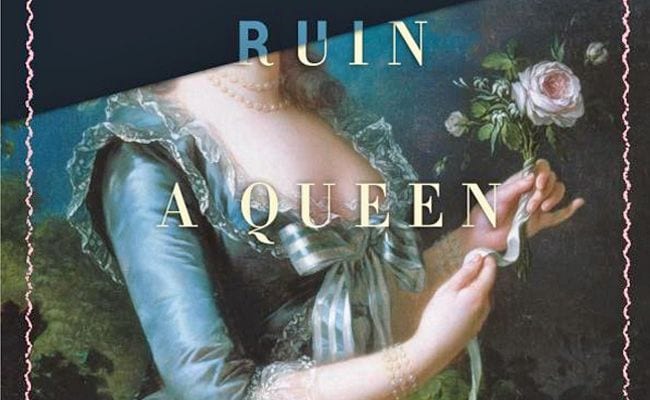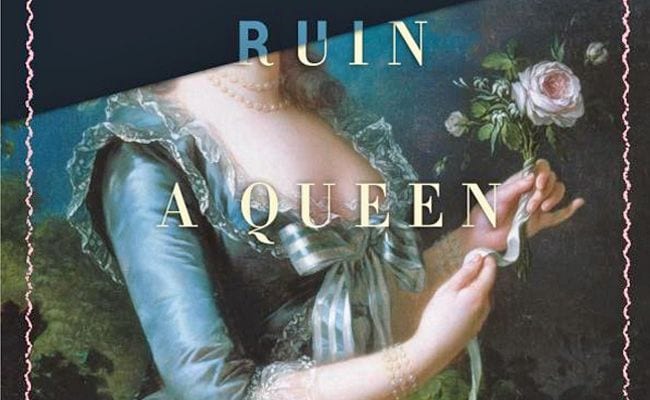
While it might sound insulting or reductive to say that a woman would lose her head for a fine piece of jewelry, this is precisely what Jonathan Beckman proposes in his delicious How to Ruin a Queen: Marie Antoinette and Diamond Necklace Affair, a historical novel that chronicles the scandal that had all of Europe talking in the years leading to the French Revolution. The Queen of France unknowingly became involved in a scheme that had courtesan Comtesse Jeanne de La Motte-Valois trick Cardinal Louis de Rohan into stealing a priceless diamond necklace that had been commissioned in 1772 by Louis XV.
The affair of the diamond necklace, as it’s popularly known, has seen many other incarnations including a 19th century retelling by Alexandre Dumas (The Queen’s Necklace, 1849) and two films which have starred the likes of Orson Welles (Black Magic, 1949) and Hilary Swank (The Affair of the Necklace, 2001). It’s safe to say that never before had the story been told with such a masterful combination of historical research and insightfulness as in Beckman’s novel, which impressively also happens to be his first.
Beckman’s book opens with Jeanne’s birth and her early years, which we are warned might be completely inaccurate because she was always in charge of inventing the biography that served her the best. What is clear is that Jeanne’s youth was filled with poverty and sickness, all of which turned her into a young woman who aspired to be nothing if not a princess. A fact which, for better or for worse, helps ingratiate her with readers. How can anyone root against someone who has already suffered so much?
Jeanne also happened to be a descendant of King Henry II, via an illegitimate son, which made her royal aspirations feel much more valid. With Versailles in mind as her ultimate goal, she married Marc Antoine-Nicolas de la Motte and both of them assumed royal titles.
Then we are introduced to Cardinal Louis de Rohan a man who, against the practices of the churchm chose to hunt as often as he could and who flirted with young ladies without ever thinking of his vow of chastity. While staying in Vienna on a diplomatic mission, his behavior catches the eye of Empress Maria Theresa, who asks him to stop his extravagance but is met with resistance and worse than that, mockery. He returns to France discredited by the Empress, and by default discredited under the eyes of her daughter Queen Marie Antoinette. He makes it his mission to regain the esteem of the Queen, in hopes of becoming someone of the same importance as Cardinal Richeliu in the future.
Once Beckman sets the motivations of Louis and Jeanne, establishing them as twisted underdogs, his tale unravels seamlessly. Soon they have become lovers and almost immediately afterwards, the scheming Jeanne has tricked him into believing she has the power to ingratiate him with Marie Antoinette, and that the Queen is willing to let bygones be bygones…if only he can help her buy a diamond necklace her husband refuses to get her.
Regardless of the melodramatic, almost operatic overtones of the plot, which are scrumptiously told by Beckman, How to Ruin a Queen is at its best when it pulls its focus back to contextualize the sociopolitical setting in which the story is unfolding. Beckman paints these characters with strokes that fool us into believing he might have as well interviewed them in person to get their first hand testimony. They are all so well rounded and real, that we might even hope their outcome will be different.
Beckman’s portrait of the Queen is particularly moving. He reminds us that she arrived in France as a child and spent her short life trying to live up to the incoherences of courtly life. “Marie Antoinette felt the rituals of the Court were humiliating and claustrophobic,” he explains, before telling of a strange incident in which the young Queen once found herself “naked and prickled with goose-pimples” as three noblewomen argued over who would have the pleasure of helping her get dressed.
If the Queen’s eventual beheading is impossible to ignore, Beckman does a terrific job in allowing her to be much more than the frivolous woman that many historical tellings have portrayed. At times the book feels tinged with satirical tones. For example, Beckman stresses the fact that the necklace in question wasn’t only distinctive for its worth but also for its hideousness. It was a monstrous piece of jewelry that he suggests the Queen refused to wear both for political and personal reasons. The novel also highlights the irony of Jeanne’s ambition turning into “the Revolution in microcosm”, as it would ignite a spark that set the people of France into a state of turmoil and anger. If only all history were this deliciously told.


![Call for Papers: All Things Reconsidered [MUSIC] May-August 2024](https://www.popmatters.com/wp-content/uploads/2024/04/all-things-reconsidered-call-music-may-2024-720x380.jpg)



